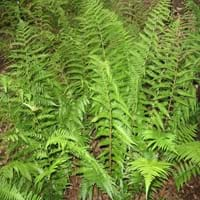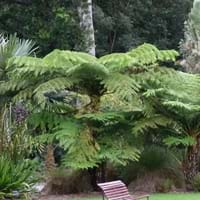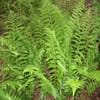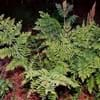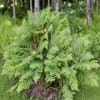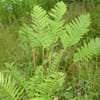Life Span
Perennial
Perennial
Origin
United States, Southeastern United States, South-Central United States
Australia
Types
Not Available
Not Available
Habitat
Woodlands
Damp Places
USDA Hardiness Zone
5-9
10-15
Sunset Zone
Not Available
H2, 8, 9, 14, 15, 16, 17, 19, 20, 21, 22, 23, 24
Habit
Clump-Forming
Arching/Fountain-shaped
Flower Color
Not Available
Non Flowering Plant
Flower Color Modifier
Bicolor
Bicolor
Fruit Color
Non Fruiting Plant
Not Available
Leaf Color in Spring
Not Available
Light Green
Leaf Color in Summer
Green
Dark Green
Leaf Color in Fall
Green
Dark Green
Leaf Color in Winter
Dark Green
Dark Green
Leaf Shape
Toothed
Fern like
Plant Season
Spring, Summer, Fall, Winter
Spring, Summer, Fall, Winter
Sunlight
Full Sun, Partial shade
Partial shade
The pH of Soil
Acidic, Neutral
Acidic
Soil Drainage
Average
Average
Bloom Time
Indeterminate
Not Available
Tolerances
Drought, Wet Site
Not Available
Where to Plant?
Container, Ground
Ground
How to Plant?
Divison, Spores
Spores
Plant Maintenance
Medium
Medium
Watering Requirements
Requires a lot of watering, Requires regular watering, Requires watering in the growing season, Water Deeply
Requires consistently moist soil
In Summer
Lots of watering
Lots of watering
In Spring
Moderate
Moderate
In Winter
Average Water
Average Water
Soil pH
Acidic, Neutral
Acidic
Soil Drainage Capacity
Average
Average
Sun Exposure
Full Sun, Partial shade
Full Shade, Partial shade
Pruning
Remove damaged leaves, Remove dead branches, Remove dead leaves
Remove damaged leaves, Remove dead branches, Remove dead leaves
Fertilizers
All-Purpose Liquid Fertilizer
All-Purpose Liquid Fertilizer
Pests and Diseases
Red blotch
Squirrels
Plant Tolerance
Drought
Drought
Flower Petal Number
Single
Single
Foliage Texture
Fine
Fine
Foliage Sheen
Glossy
Matte
Allergy
Avoid during Pregnancy, coma, Eye irritation, weakness
Carcinogenic
Aesthetic Uses
Beautification, Landscape Designing, Showy Purposes
Not Available
Beauty Benefits
Not Available
Not Available
Environmental Uses
Air purification
Air purification
Medicinal Uses
Nutrients
Astringent
Part of Plant Used
Leaves
Leaves, Stem
Other Uses
Air freshner, Decoration Purposes, Employed in herbal medicine, Showy Purposes, Used for its medicinal properties
Not Available
Used As Indoor Plant
Yes
No
Used As Outdoor Plant
Yes
Yes
Garden Design
Groundcover, Mixed Border, Rock Garden, Wall
Container, Feature Plant, Tropical
Botanical Name
DRYOPTERIS x australis
DICKSONIA antarctica
Common Name
Wood Fern
Australian tree fern, Tasmanian tree fern, hardy tree fern, soft tree fern, woolly tree fern
In Hindi
dixie wood fern
Tasmanian Tree Fern
In German
dixie wood fern
Tasmanian Tree Fern
In French
dixie wood fern
Dicksonia antarctica
In Spanish
helecho de madera dixie
Balantium antarcticum
In Greek
dixie wood fern
Tasmanian Tree Fern
In Portuguese
dixie samambaia de madeira
Dicksonia antarctica
In Polish
dixie wood fern
Diksonia antarktyczna
In Latin
Fern Dixie
Tasmanian Tree Fern
Phylum
Filicinophyta
Pteridophyta
Class
Filicopsida
Filicopsida
Order
Filicales
Polypodiales
Family
Dryopteridaceae
Dicksoniaceae
Genus
Polystichum
Dicksonia
Clade
Not Available
Not Available
Tribe
Not Available
Not Available
Subfamily
Not Available
Not Available
Number of Species
Not Available
Not Available
Difference Between Dixie Wood Fern and Tasmanian Tree Fern
If you are confused whether Dixie Wood Fern or Tasmanian Tree Fern are same, here are some features about those plants to help you choose better. Many people think that these two plants have the same characteristics, but one can see Dixie Wood Fern and Tasmanian Tree Fern Information and learn more about it. Fertilizers required for proper growth of Dixie Wood Fern are All-Purpose Liquid Fertilizer, whereas for Tasmanian Tree Fern fertilizers required are All-Purpose Liquid Fertilizer. Hence, one should know the basic difference between Dixie Wood Fern and Tasmanian Tree Fern if you are planning to have them in your garden to enhance its beauty.
<
Flowering PlantsImportance of Dixie Wood Fern and Tasmanian Tree Fern
Want to have the most appropriate plant for your garden? You might want to know the importance of Dixie Wood Fern and Tasmanian Tree Fern. Basically, these two plants vary in many aspects. Compare Dixie Wood Fern and Tasmanian Tree Fern as they differ in many characteristics such as their life, care, benefits, facts, etc. Every gardener must at least have the slightest clue about the plants he wants to plant in his garden. Compare their benefits, which differ in many ways like facts and uses. The medicinal use of Dixie Wood Fern is Nutrients whereas of Tasmanian Tree Fern is Astringent. Dixie Wood Fern has beauty benefits as follows: Not Available while Tasmanian Tree Fern has beauty benefits as follows: Not Available.
Compare Facts of Dixie Wood Fern vs Tasmanian Tree Fern
How to choose the best garden plant for your garden depending upon its facts? Here garden plant comparison will help you to solve this query. Compare the facts of Dixie Wood Fern vs Tasmanian Tree Fern and know which one to choose. As garden plants have benefits and other uses, allergy is also a major drawback of plants for some people. Allergic reactions of Dixie Wood Fern are Avoid during Pregnancy, coma, Eye irritation and weakness whereas of Tasmanian Tree Fern have Carcinogenic respectively. Having a fruit bearing plant in your garden can be a plus point of your garden. Dixie Wood Fern has no showy fruits and Tasmanian Tree Fern has no showy fruits. Also Dixie Wood Fern is not flowering and Tasmanian Tree Fern is not flowering . You can compare Dixie Wood Fern and Tasmanian Tree Fern facts and facts of other plants too.
